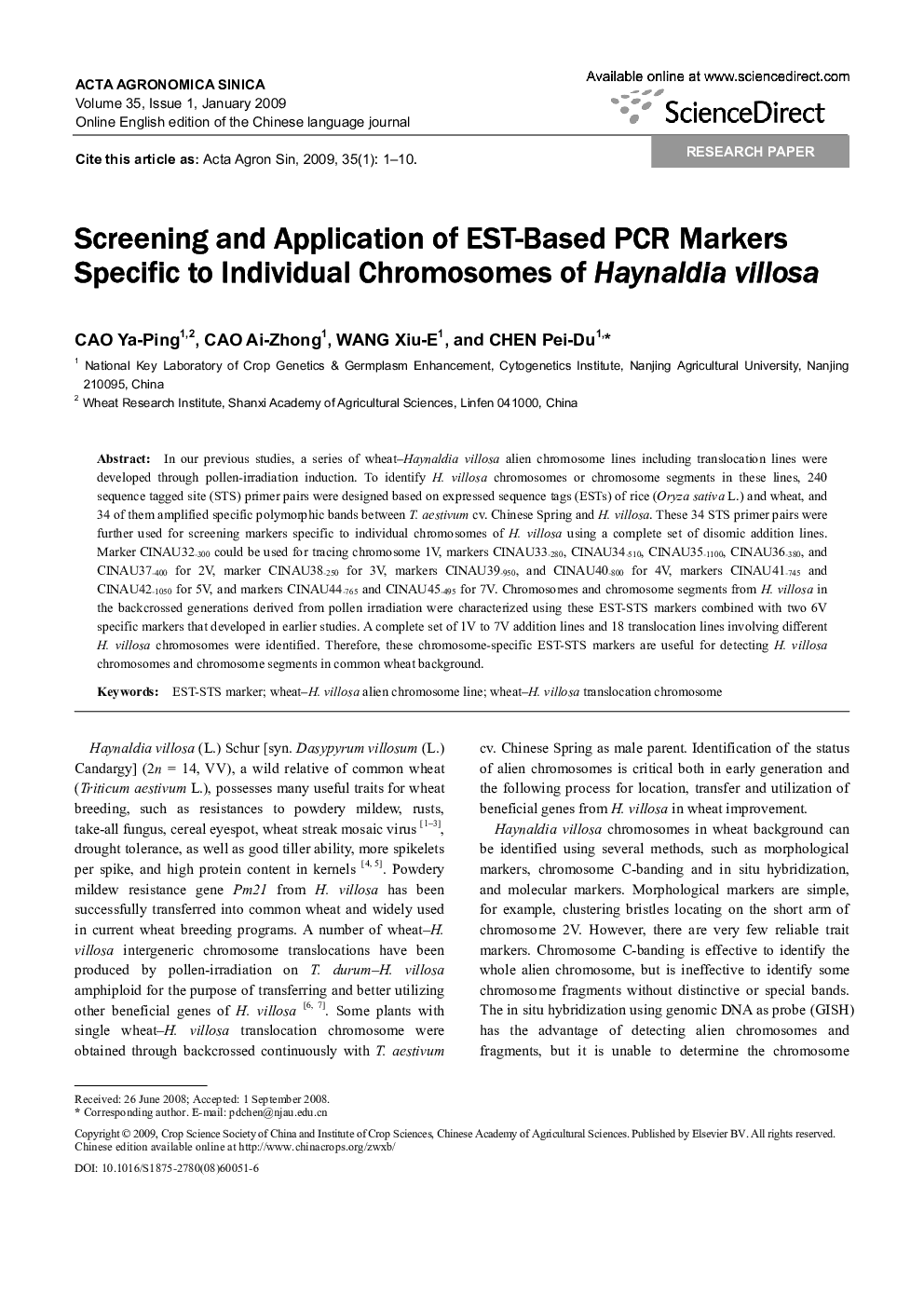| Article ID | Journal | Published Year | Pages | File Type |
|---|---|---|---|---|
| 4503383 | Acta Agronomica Sinica | 2009 | 10 Pages |
In our previous studies, a series of wheat–Haynaldia villosa alien chromosome lines including translocation lines were developed through pollen-irradiation induction. To identify H. villosa chromosomes or chromosome segments in these lines, 240 sequence tagged site (STS) primer pairs were designed based on expressed sequence tags (ESTs) of rice (Oryza sativa L.) and wheat, and 34 of them amplified specific polymorphic bands between T. aestivum cv. Chinese Spring and H. villosa. These 34 STS primer pairs were further used for screening markers specific to individual chromosomes of H. villosa using a complete set of disomic addition lines. Marker CINAU32−300 could be used for tracing chromosome 1V, markers CINAU33−280, CINAU34−510, CINAU35−1100, CINAU36−380, and CINAU37−400 for 2V, marker CINAU38−250 for 3V, markers CINAU39−950, and CINAU40−800 for 4V, markers CINAU41−745 and CINAU42−1050 for 5V, and markers CINAU44−765 and CINAU45−495 for 7V. Chromosomes and chromosome segments from H. villosa in the backcrossed generations derived from pollen irradiation were characterized using these EST-STS markers combined with two 6V specific markers that developed in earlier studies. A complete set of 1V to 7V addition lines and 18 translocation lines involving different H. villosa chromosomes were identified. Therefore, these chromosome-specific EST-STS markers are useful for detecting H. villosa chromosomes and chromosome segments in common wheat background.
